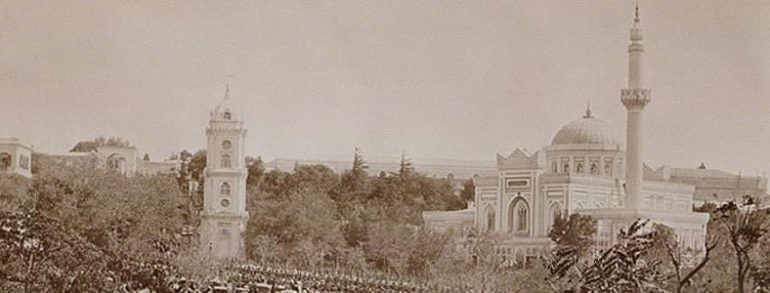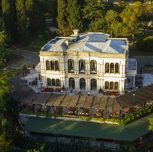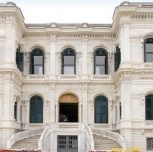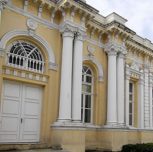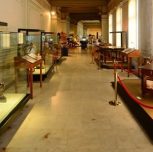The history of the well-protected vast imperial complex, housing imperial Ottoman pavilions and structures in a magnificent natural park with walled sections, goes back to the 16thcentury.
In earlier Ottoman periods, even from the time of Süleyman, the Magnificent (1520-1566), the large area between Beşiktaş, Ortaköy and Balmumcu was an uninhabited woodland, named Kazancıoğlu Bahçesi. It was a popular hunting area for the Ottoman sultans. It is believed that the woodland was included in the imperial properties by Sultan Ahmed I (1603-1617). Ahmed III (1703-1730) lived in a pavilion in the park for a while, but left there in 1726. The land received its current name after the “Yıldız Pavilion” built by Sultan Selim III (1789-1807) for his mother, Mihrişah Valide Sultan. "Yıldız" means star in Turkish. Selim III also built a fountain in rococo style for his father.
More structures were added to the area during the reigns of Sultan Mahmud II (1808-1839) and Sultan Abdülmecid (1839-1861). Meanwhile, Abdülmecid demolished some structures, including the Yıldız Pavilion, and added in 1842 a new pavilion, called Kasr-ı Dilküşa”, for his mother, Bezm-i Alem Valide Sultan. Sultan Abdülaziz (1861-1876) also enjoyed visiting the area especially in summer time and built the Great Mâbeyn Pavilion (state apartments), Çit Pavilion in the private section, Malta and Çadır Kiosks in the outer garden.
Finally, Sultan Abdülhamid II (1876-1909) expanded the outer garden by purchasing new lands and developed the area by adding surrounding high walls like in Topkapi Palace, state apartments, private theater, museum, library, zoo and workshops, and he spent 32 years here. Abdülhamid II, who was a skilled carpenter, handcrafted most of the furniture, which can be seen today at the Yıldız Palace and Beylerbeyi Palace in Istanbul. The complex, hereafter, became the fourth palace complex of the Ottoman Empire in Istanbul after Old Palace (today, it does not exist), Topkapi Palace and Dolmabahçe Palace. The palace, which witnessed many historical decisions and events, became so self-sufficient that the following sultan, Mehmed Reşat (1909-1918), even had a medical operation in the Four Seasons Hall.
The 19th-century palace, called Saray-ı Hümâyûn (Central palace), is the last architectural example of a Turkish Ottoman palace. From pavilions, pools to greenhouses and offices, the large complex consists of various structures designed in Baroque, Art Nouveau and Neo-Classic architectural styles.
Situated next to its main entrance outside the walls, the complex also includes the Yıldız Clock Tower and the Yıldız Mosque (Yıldız Cami), which is the last imperial mosque (selâtin) and is one of the best examples of late Ottoman architecture.
Sultan Mehmed VI Vahidettin (1918-1922), the last Ottoman sultan, lived at Yıldız Palace until his exile in 1922. After the creation of the Turkish Republic, the palace buildings were used by the military schools. The complex was given to the Ministry of Tourism and Culture in 1977. The complex, currently situated right at the center of the city, has been used as a museum and a public park since 1993.
The pavilions, which no longer exist, were the Persian (Acem) Pavilion built in 1900 to welcome Iranian Shah Muzafferuddin and theTalimhane Pavilion built for the Sultans to watch the military ceremonies and exercises.


